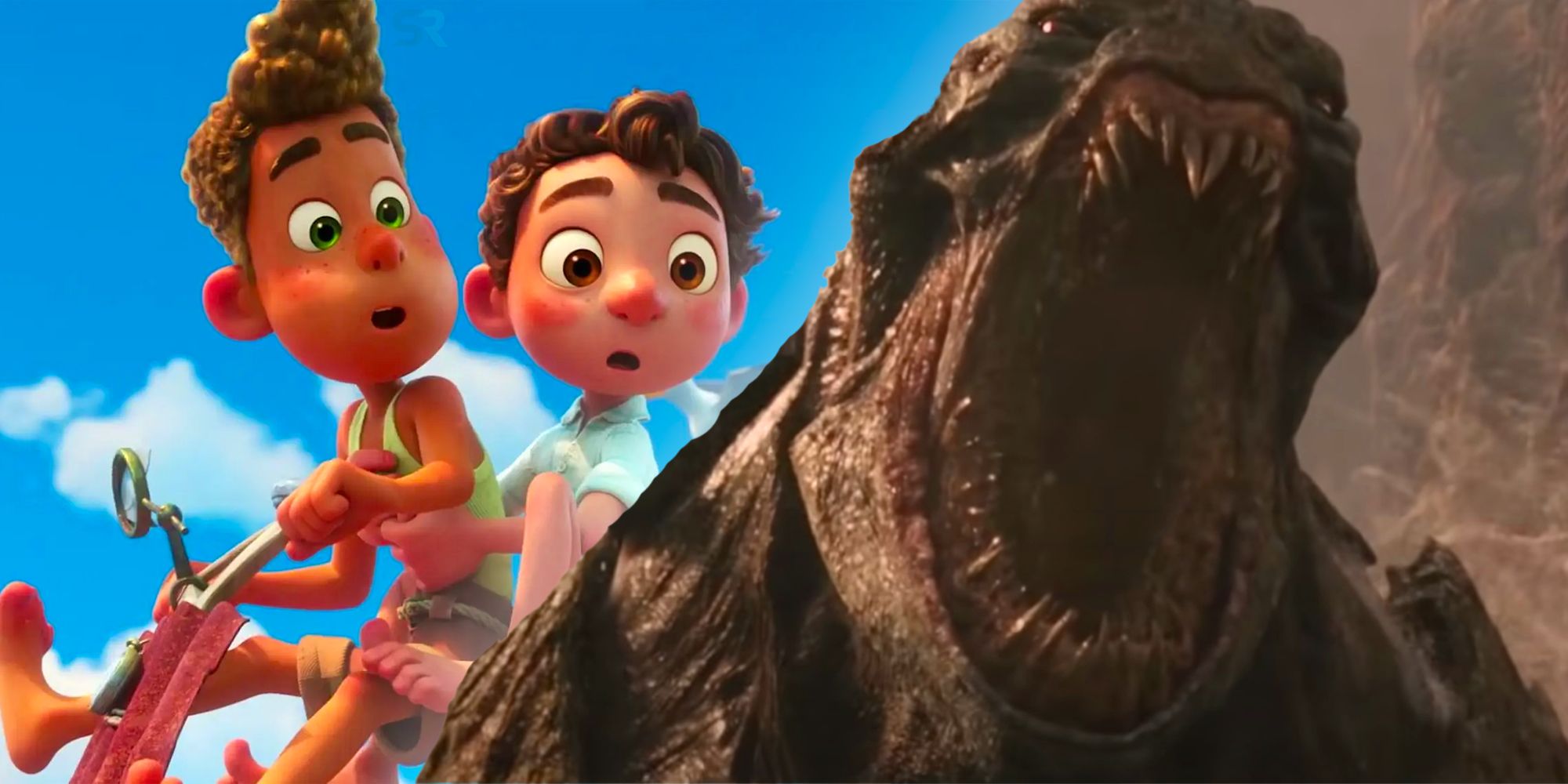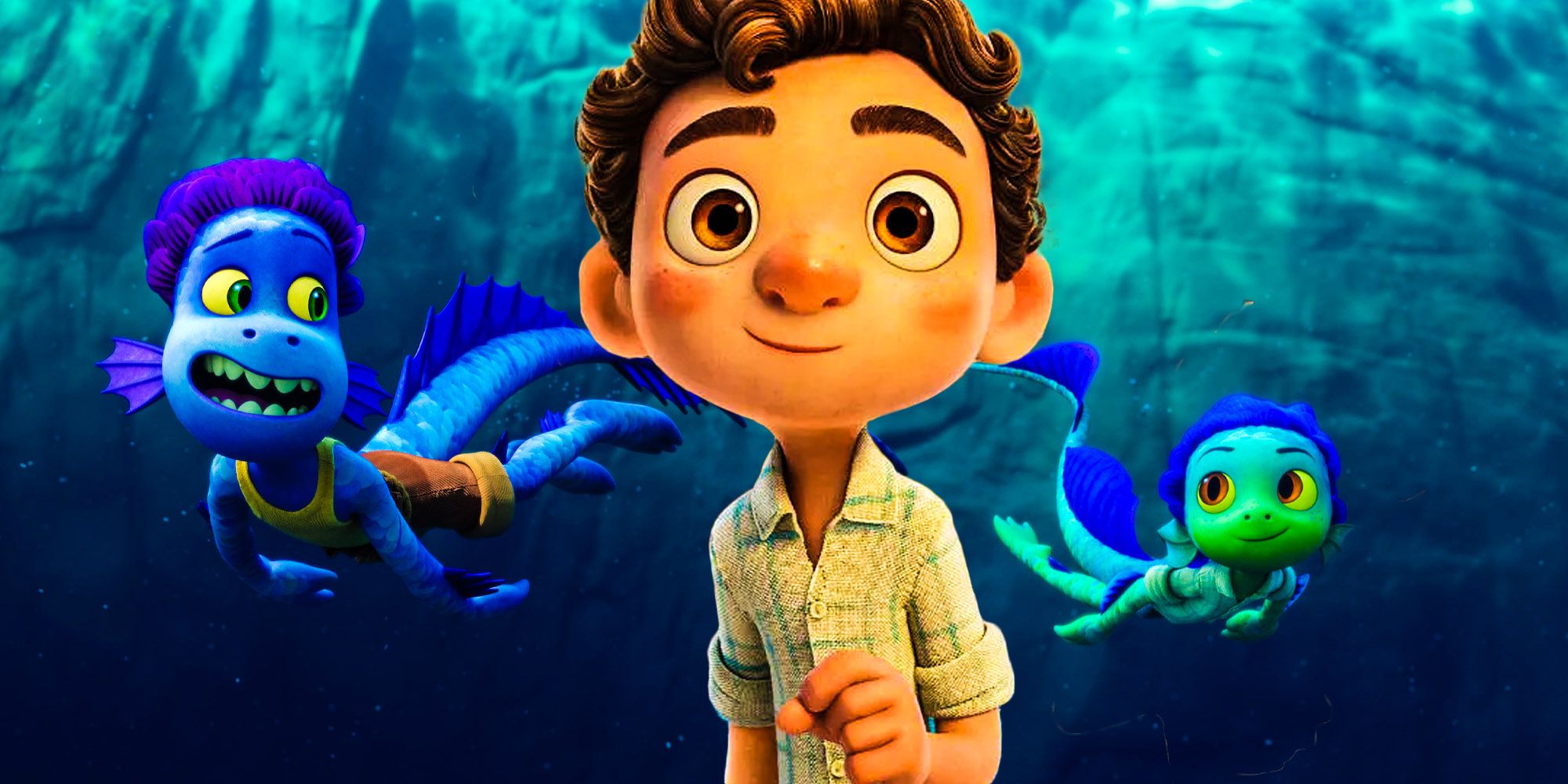The original ending to Luca included a huge kraken. Over the years, Pixar has become associated with making animated films that touch upon feelings of nostalgia and address life lessons that both adults and children can learn from. One of the main reasons that these films are so treasured by audiences, critics, and the Academy of Motion Picture Arts and Sciences is due to how well most of these stories manage to incorporate such powerful narratives and themes. However, as the company's filmography grows, more stories are being told that do not necessarily aim to operate on as large a scale.
The most recent Disney and Pixar film follows two sea monsters named Luca (Jacob Tremblay) and Alberto (Jack Dylan Grazer). When they are above the surface, they take on a human appearance as long as they do not get wet. They meet a girl named Giulia (Emma Berman) in a nearby village and enter a local competition with her, as the boys dream of one day getting a Vespa and traveling the world together. The story is inspired by director Enrico Casarosa's childhood.
In a recent interview with Slashfilm, Casarosa spoke on the original pitch for the film. Most Disney and Pixar releases go through multiple iterations before their release, although this one is quite drastic. There were supposed to be more characters, including an additional main character, as well as a much more epic climax. However, the decision was made to scale it back. Read on below for Casarosa's interview on the original story:
“His name was Ciccio, so we recast him as a goon for our [villain] Ercole, and they were on a bigger quest. They were going to become human. They were going to turn fully human, and there were magical tokens, and we realized that it needed to be more focused on the friendship. We got rid of the third wheel, we kept Luca and Alberto a little more at the center, and we realized that is really what we’re interested in here.”
“We had a big ending with a kraken, Alberto turning into a kraken magically and Luca was going to protect him and defend him. And we realized that we want to tell a smaller kid-like movie world here, so the monster movie ending – which was very much about the two factions, very much about two worlds against each other – that might work with the Romeo and Juliet version of the story, but it didn’t really work for the one that we more and more fell in love with.”
These are some fairly substantial changes that would have entirely changed the flow and identity of the film. Having a third main character and another plot element that involves turning them human would have potentially spread the focus a bit thin. Placing more focus on Luca and Alberto allows for the story of their friendship to really be explored and put under the microscope. Most Pixar titles tend to have a grand climax, although this film's more subtle approach sets it apart from the rest.
One of Luca's greatest strengths is its tight focus on an intimate narrative. While a giant kraken is a fun climactic element, it does not fit the tone of the rest of the film. Some critics have faulted Pixar's latest offering for being a quieter movie on a smaller scale than the animated films it stands alongside, although that is what contributes to its unique charm. Clearly, this is also the iteration that Casarosa is proud to share with the world. Luca is available now to stream on Disney+.
Source: Slashfilm


